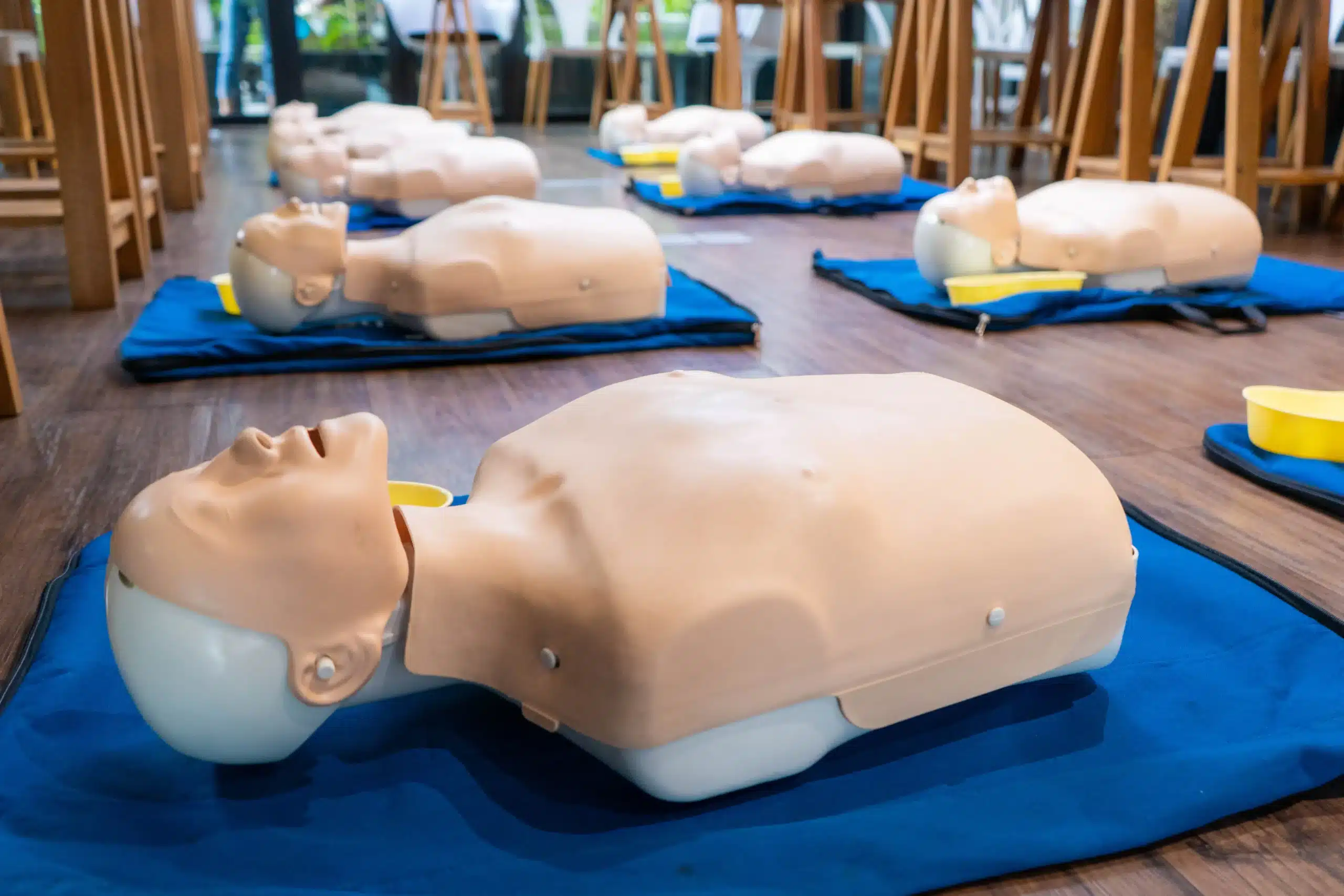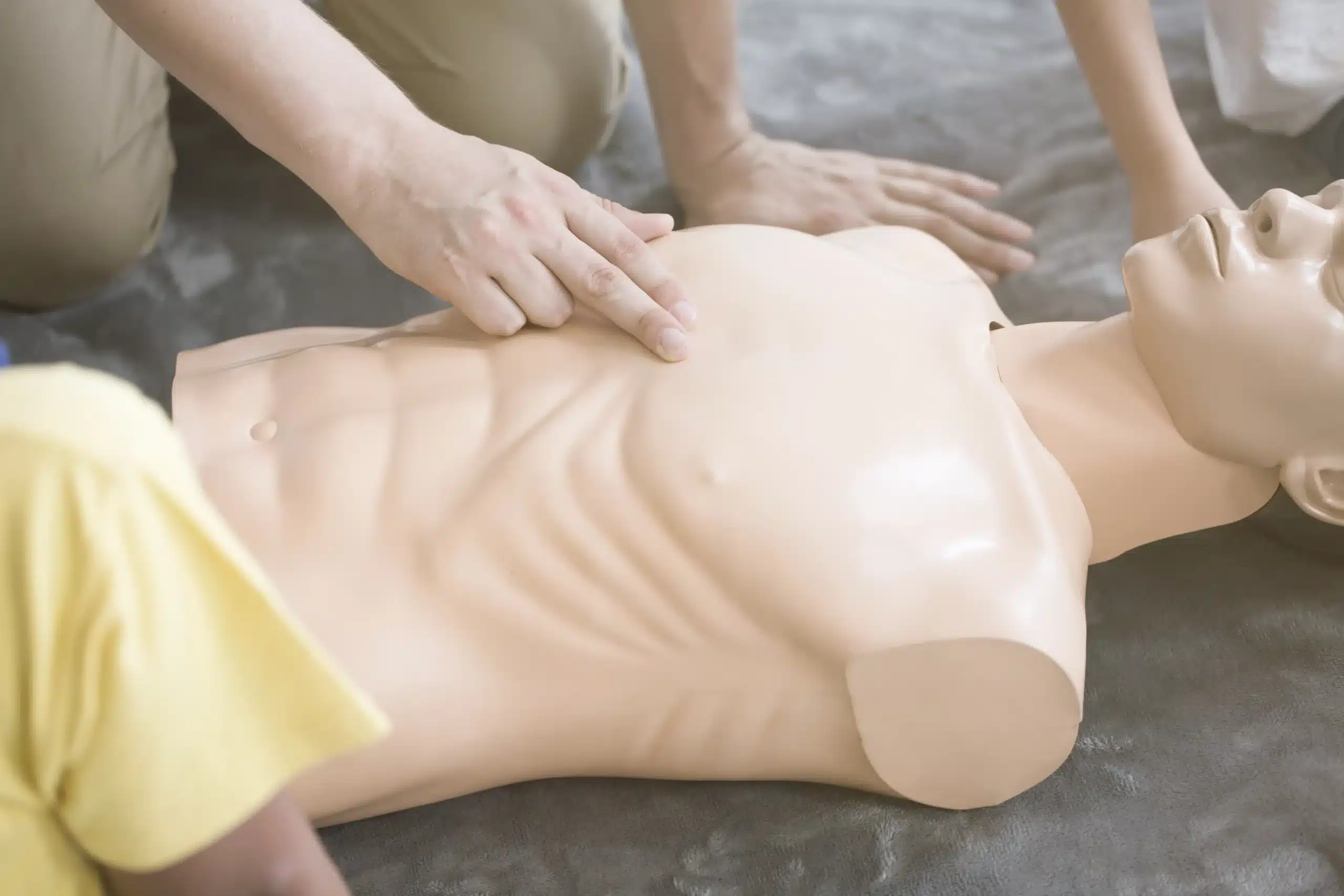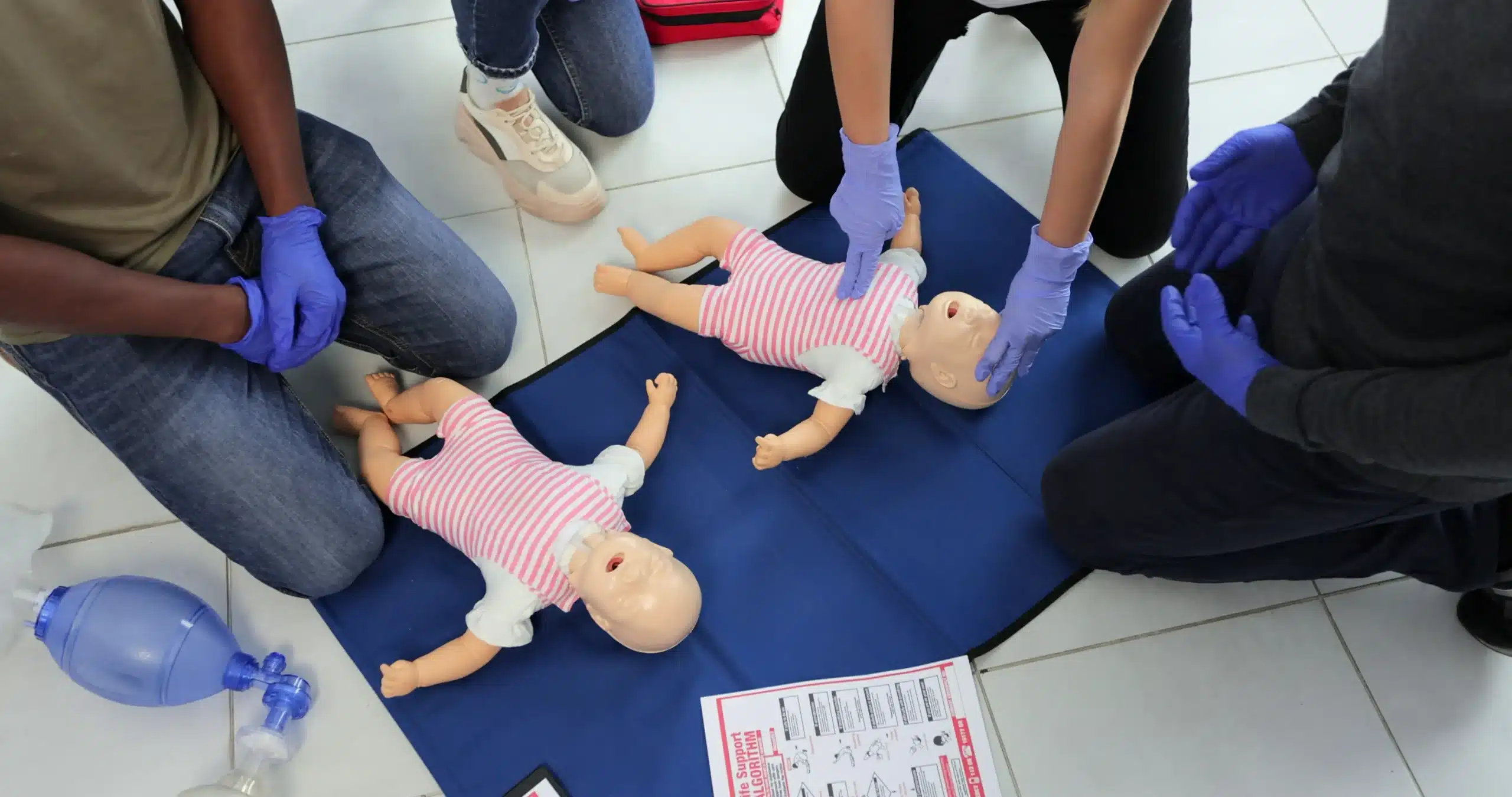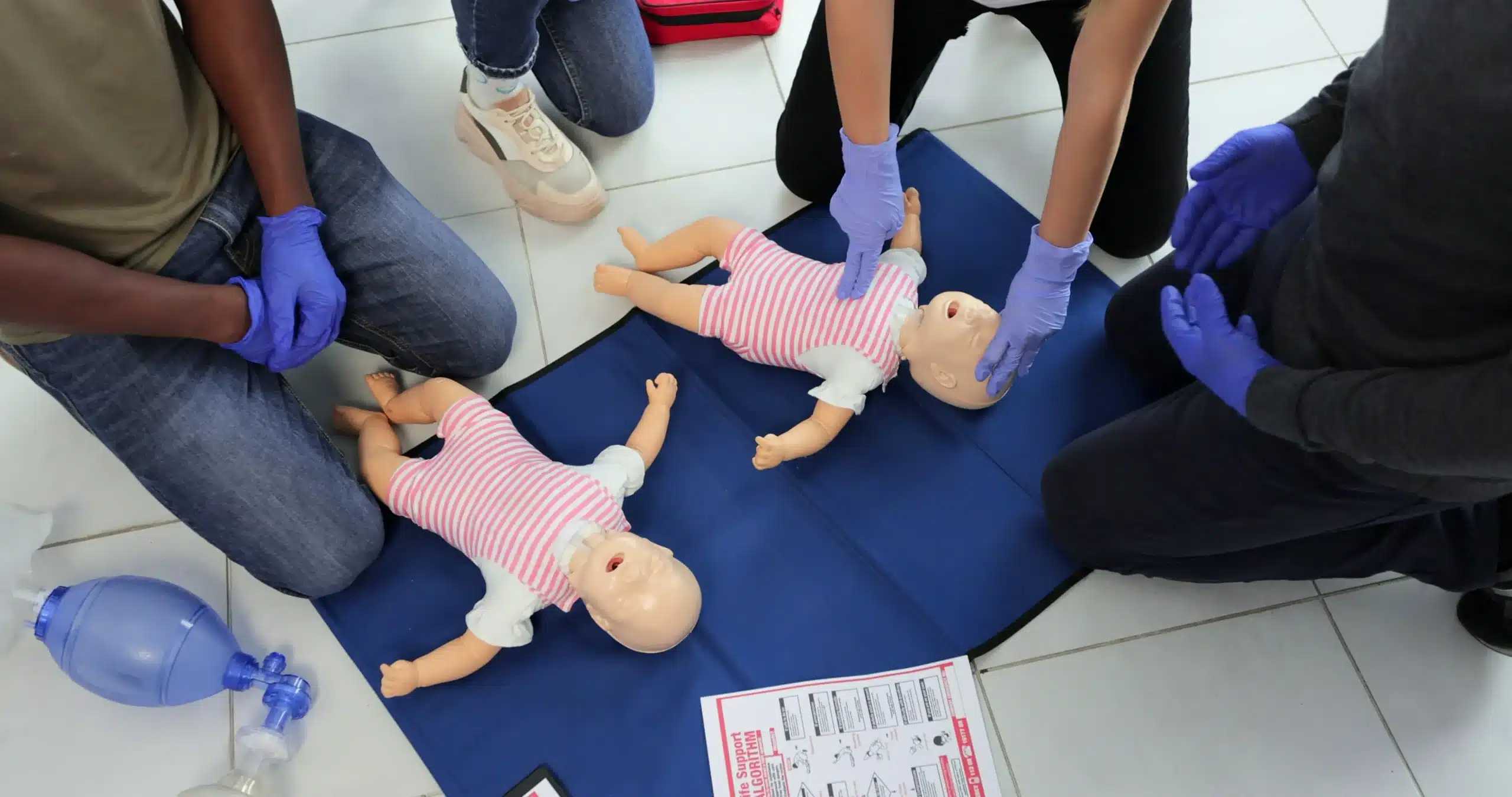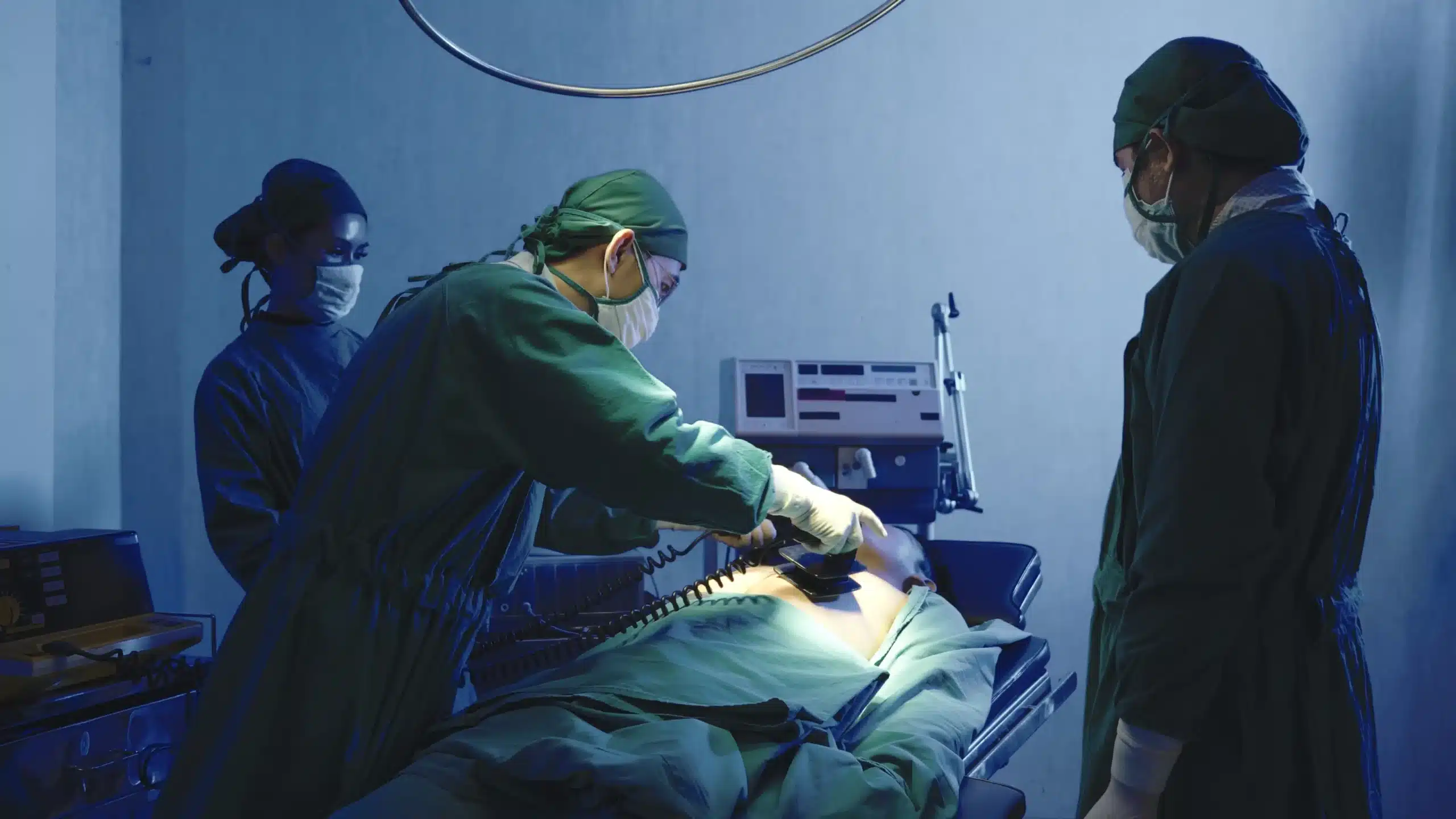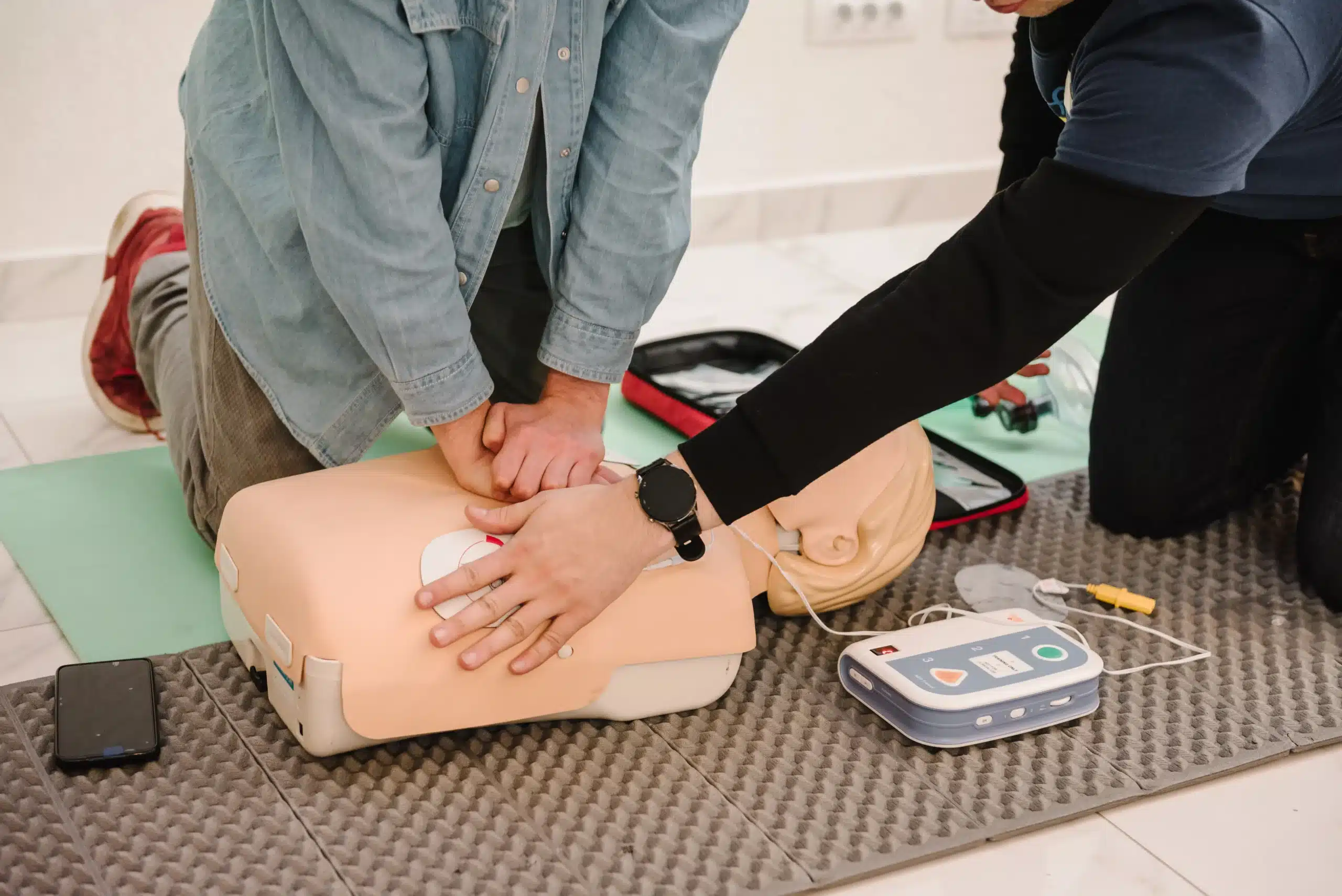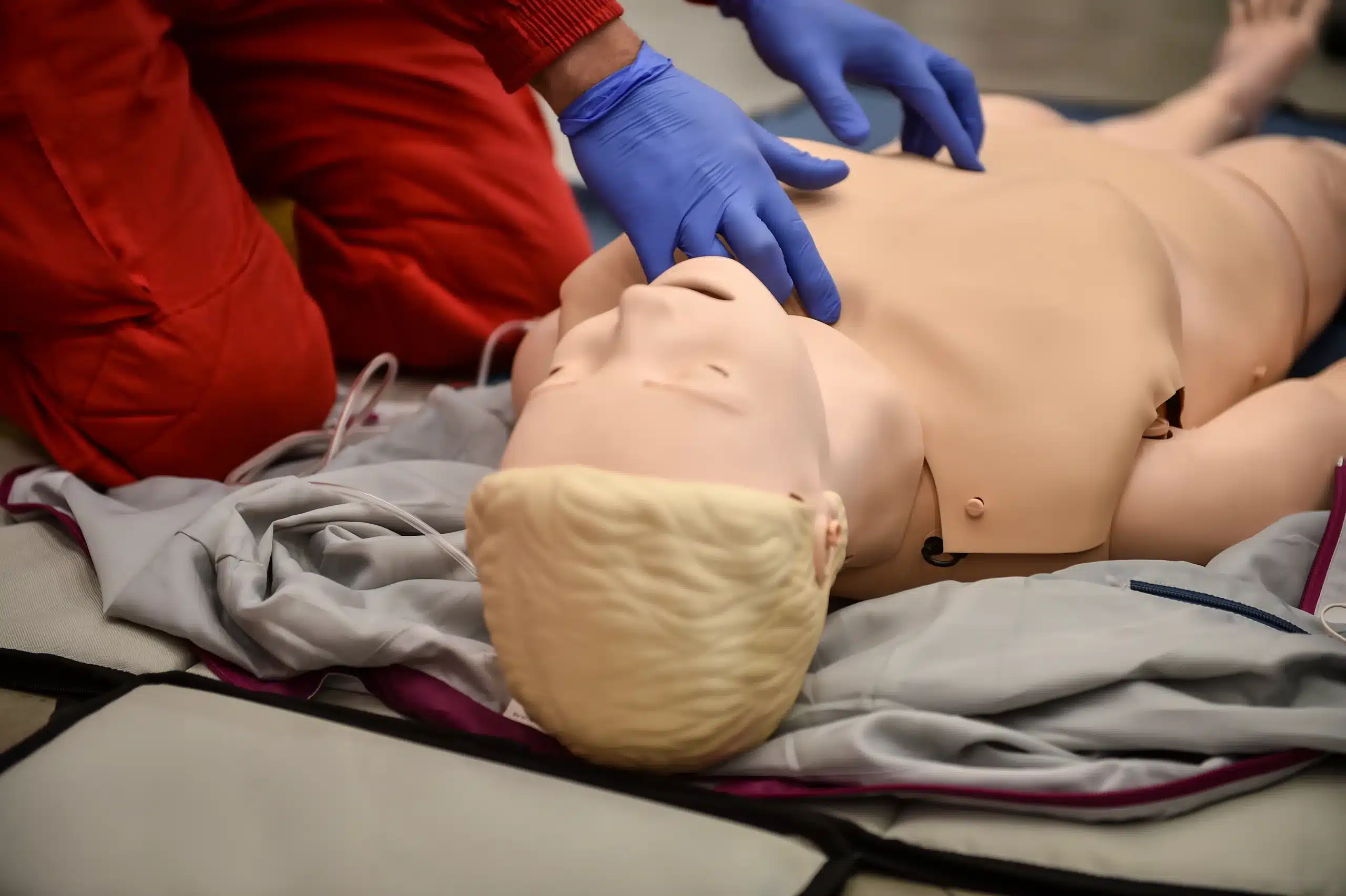Medical emergencies can happen anytime, anywhere. Being equipped with CPR and first-aid skills can make you a vital link in the chain of survival. This article explores the world of CPR and first-aid training in Alameda, offering valuable insights into the different types of certifications, the benefits of training, and where to find reputable providers in your area. We’ll discuss the importance of AHA certifications, specialized training options like EMSA Child Care Health & Safety, and the flexibility of blended learning programs. Whether you’re a healthcare professional, a parent, or simply a concerned citizen, this guide will help you understand the value of CPR and first-aid in Alameda and how to get certified.
Key Takeaways
- CPR and first-aid skills empower you to help: These skills enable you to confidently handle medical emergencies and potentially save lives in various situations. Choose a certification—CPR/AED, BLS, ACLS, or PALS—that aligns with your needs.
- Finding the right course is simple: Consider factors like certification type, learning style (in-person, blended, or online), and schedule. Reputable providers offer flexible options to fit your lifestyle.
- Invest in your skills and stay current: Training costs vary, but many providers offer group discounts. Remember to recertify to maintain your skills and preparedness for emergencies.
What is CPR and First-Aid Training in Alameda?
Knowing how to respond to a medical emergency can make all the difference. CPR and first-aid training equip you with the skills to assist someone experiencing a sudden illness or injury. In Alameda, several organizations offer comprehensive training programs covering a range of situations, from treating minor cuts and burns to performing CPR during a cardiac arrest. Let’s explore why these skills are so important and where you can find training in Alameda.
Why Life-Saving Skills Matter
CPR (Cardio-Pulmonary Resuscitation) is a critical life-saving technique. Learning and knowing CPR can dramatically increase a person’s chance of survival during cardiac arrest, sometimes doubling or even tripling their odds. Since roughly 70% of out-of-hospital cardiac arrests happen at home, bystander CPR from a friend or family member is often the first line of defense. These skills can truly be life-saving for someone you love.
Available Certifications
Various certifications are available depending on your needs and interests. Safety Training Seminars offers a range of American Heart Association (AHA) courses, including BLS (Basic Life Support), ACLS (Advanced Cardiovascular Life Support), PALS (Pediatric Advanced Life Support), CPR, and First Aid. These certifications ensure you receive standardized, high-quality training aligned with national guidelines.
Key Alameda Training Providers
Several reputable organizations offer CPR and first-aid training in Alameda. Here are a few options:
Safety Training Seminars
Safety Training Seminars provides AHA-certified CPR, BLS, ACLS, PALS, and First Aid classes in Alameda. They offer a convenient schedule with classes running daily from 8 am to 10 pm.
CPR Education
CPR Education offers various courses, including AHA Heartsaver, BLS, and Pediatric First-Aid with CPR/AED. Experienced instructors, including firefighters and paramedics, teach their classes.
Lifesavers CPR
Lifesavers CPR offers CPR and First Aid certification, along with AED equipment sales and OSHA-approved online safety training. They serve the San Francisco Bay Area, with convenient evening and Saturday classes available at their Alameda office or on-site.
Bay Area CPR
Bay Area CPR offers AHA CPR, BLS, ACLS, and PALS courses in Alameda. They can also teach CPR and First-aid at your location any day of the week.
Find the Right Course and Enroll
Finding the right CPR and first-aid course in Alameda hinges on a few key factors: the type of certification you need, your preferred learning style, and your schedule. Let’s break down how to find the perfect fit.
AHA-Certified Courses
If you’re pursuing a career in healthcare or a related field, an American Heart Association (AHA) certification is often required. Safety Training Seminars, a woman-owned AHA Training Center in Alameda, offers a range of AHA courses, including BLS, ACLS, PALS, CPR, and First Aid. They’re known for their excellent customer service and offer some of the lowest prices in Alameda County, with certification cards available the same day you complete the course.
Specialized Training
Beyond standard CPR and first-aid training, you might need more specialized certifications. For example, those working in childcare often require EMSA Child Care Health & Safety training. It’s important to research the specific requirements for your profession to ensure you enroll in the appropriate course. Factors influencing the final price include the certification level (CPR/AED, BLS, ACLS, PALS, etc.), the course format (in-person or blended learning), and the training provider. Safety Training Seminars offers this specialized training as well.
Flexible Learning
Balancing work, family, and other commitments can make finding time for training challenging. Look for providers that offer flexible learning options. Alameda CPR Classes offers a combined CPR and First Aid certification course that includes an online component, allowing you to learn the basics at your own pace before attending in-person skills testing. This blended learning approach can be a great way to fit training into a busy schedule.
Enrollment and Schedules
Once you’ve identified the right course, enrolling should be straightforward. Safety Training Seminars offers courses every day of the week in Alameda and nearby cities. Check their website or give them a call to find a class time that works for you. They offer courses designed for everyone from healthcare providers to concerned parents. If you’re training a group, they also offer discounts, which can be a cost-effective solution for workplaces or community organizations.
Costs, Value, and Expert Instructors
Getting CPR and first-aid certified is an investment in yourself and your community. Let’s break down the costs associated with these courses, explore available discounts, and discuss the importance of qualified instructors.
Course Costs
CPR and first-aid training costs vary based on several factors. The type of certification you pursue (CPR/AED, BLS, ACLS, PALS, etc.) will influence the price, as will the course format (in-person or blended learning). For example, a combined CPR and First Aid certification course in Alameda is offered at $140. It’s always a good idea to check with various providers like Safety Training Seminars for their most up-to-date pricing. Remember, the cost of training is a small price to pay for the invaluable skills you’ll gain.
Discounts and Group Rates
Looking to train a team or group? Many providers, including Safety Training Seminars, offer discounts for group classes. This can significantly reduce the cost per person, making it a more affordable option for organizations, businesses, or even groups of friends. Sometimes, shorter informational CPR training is also available at a lower price point.
Instructor Qualifications
The quality of your training experience depends heavily on the instructor’s expertise. Experienced, certified instructors can create a more engaging and effective learning environment. Look for training centers with instructors certified by reputable organizations like the American Heart Association (AHA). Safety Training Seminars, for example, prioritizes high-quality instruction. Choosing a training center with qualified instructors ensures you receive accurate information and develop the confidence to apply your skills effectively.
Training Facilities
Alameda has a variety of training facilities offering CPR and first-aid certification. These range from dedicated training centers to community organizations. Safety Training Seminars, for instance, is a woman-owned, AHA Training Center in Alameda. When choosing a facility, consider factors like location, accessibility, and the overall learning environment. A comfortable and well-equipped facility can contribute to a positive learning experience.
Benefits of CPR and First-Aid Certification
Knowing what to do in a medical emergency can make all the difference. Getting your CPR and First-Aid certification offers significant benefits, from personal safety to career advancement. Let’s explore why these skills are so valuable.
Personal Safety and Community Impact
CPR and First-Aid certification classes empower you to respond effectively to emergencies at home, work, or in your community. These skills can help you save a life, whether it’s a family member, friend, or even a stranger. Being certified means you’re prepared to assist until professional help arrives, potentially minimizing injuries and improving outcomes. This preparedness benefits those around you and fosters a stronger, more resilient community.
Career Advancement
In many professions, CPR and First-Aid certification is a requirement or a significant advantage. CPR Certification can open doors to new opportunities or enhance your current career path. Whether you’re in healthcare, education, childcare, or another field, these certifications demonstrate your commitment to safety and preparedness, making you a more valuable team member. These certifications can also strengthen your resume.
Confidence in Emergencies
Beyond practical skills, CPR and First-Aid certification instills confidence in emergencies. Learning how to assess a situation and provide appropriate care builds confidence to take decisive action when seconds count. It also reduces feelings of helplessness, allowing you to support others during a stressful event.
Choose Your Alameda CPR and First-Aid Course
Finding the right CPR and First-Aid class can feel overwhelming, but it doesn’t have to be. By understanding what to look for and comparing your options, you can easily find a course that fits your needs and budget.
Course Selection Factors
When selecting a CPR and First-Aid course, think about a few key things. First, what type of certification do you need? Basic CPR/AED certification covers the essentials, while certifications like BLS, ACLS, and PALS are more advanced and geared towards healthcare providers. The cost of your course will depend on the certification level. Also, consider whether you prefer in-person, blended learning (online and in-person), or entirely online learning. Each format has its own advantages, so choose the one that best suits your learning style and schedule. For a comprehensive guide to CPR courses in Alameda, explore this resource.
Compare Local Providers
Choosing a reputable training provider is essential for a quality learning experience. Look for providers who are authorized by the American Heart Association (AHA). Experienced instructors, flexible scheduling, and a variety of courses are also important factors to consider. Safety Training Seminars, for example, offers a wide range of AHA-certified courses, from basic CPR and First Aid to advanced certifications. Take the time to compare different providers in your area to find the best fit. For more information on CPR certification and First-Aid training in Alameda, review these guides.
Maximize Your Learning
Want to get the most out of your training? Consider a combined CPR and First Aid certification course. These comprehensive courses often include online instruction paired with in-person skills testing. This approach gives you both the knowledge and the hands-on practice you need to respond confidently in an emergency. Learning both CPR and First Aid together can better prepare you for a wider range of situations, from choking and cardiac arrest to other medical emergencies. For more details on CPR and First-Aid training options in Alameda, consult these resources.
Get Certified and Stay Certified
Common Enrollment Challenges
Finding the right CPR and first-aid class can feel overwhelming, but it doesn’t have to be. One of the first things you’ll notice is the range of prices. Several factors influence the final cost, including the type of certification (CPR/AED, BLS, ACLS, PALS, etc.), the course format (in-person or blended learning), and the training provider. For example, a basic two-hour CPR/AED course might average around $35 per person, while more advanced certifications will naturally be a larger investment. Don’t let cost be a barrier. Many providers, like Safety Training Seminars, offer a low price guarantee and discounts for group classes to make training accessible.
Inclusivity in Training
CPR and first-aid training is designed for people from all walks of life. Whether you’re a healthcare provider seeking advanced training or a parent wanting to learn the basics of CPR, there’s a course out there for you. Safety Training Seminars, for instance, offers a welcoming environment for everyone. Check with your chosen provider to discuss the class format and curriculum to ensure it meets your needs and learning style.
Maintain Skills and Recertify
Getting certified is just the first step. CPR and first-aid skills, like any other skill, require regular practice. The more you refresh your training, the more confident and effective you’ll be in a real emergency. Your certification will have an expiration date, so make sure you recertify to maintain your skills and credentials. Safety Training Seminars makes this process easy with affordable pricing and convenient scheduling, often with same-day certification cards. Staying current with your training means you’re always prepared to help when it matters most.
Related Articles
- First-Aid Training in Alameda: Your Complete Guide – Alameda CPR Classes
- CPR Training in Oakland: Your Guide to Certification – Alameda CPR Classes
- CPR & First-aid Classes in Alameda, CA – Alameda CPR Courses
- CPR Certification in Alameda: Your Comprehensive Guide – Alameda CPR Classes
- CPR Courses in Alameda: Your Comprehensive Guide – Alameda CPR Classes
Frequently Asked Questions
What’s the difference between CPR and First Aid?
CPR focuses specifically on life-saving techniques for someone who has stopped breathing or has no pulse. First Aid covers a broader range of skills for treating various injuries and illnesses, like cuts, burns, sprains, and allergic reactions. Often, you’ll find combined CPR and First Aid courses that teach both skill sets.
How do I choose the right CPR and First Aid class in Alameda?
Consider what type of certification you need (basic CPR/AED or more advanced certifications like BLS, ACLS, PALS), your preferred learning style (in-person, blended, or online), and your schedule. Compare local providers like Safety Training Seminars, CPR Education, Lifesavers CPR, and Bay Area CPR to find the best fit for your needs and budget. Look for AHA-authorized providers with experienced instructors.
How much do CPR and First Aid courses cost?
The cost depends on the certification level, course format, and provider. Basic CPR/AED courses are generally less expensive than more advanced certifications. Check with different providers for their pricing and look for discounts, especially if you’re registering a group. Safety Training Seminars, for example, offers a low price guarantee and group discounts.
Why is it important to get certified by the American Heart Association (AHA)?
AHA certifications are widely recognized and often required for healthcare and other related professions. They ensure you receive standardized, high-quality training based on the latest scientific guidelines. AHA-certified courses cover essential life-saving techniques and provide the knowledge and skills to respond effectively in medical emergencies.
How can I maintain my CPR and First Aid skills after getting certified?
Regular practice is key to maintaining your skills and confidence. Consider refresher courses or practice scenarios to stay sharp. Also, remember that certifications expire, so make sure you recertify according to the guidelines of your certifying organization (like the AHA) to keep your credentials current. Many providers offer recertification courses, making it easy to stay up-to-date.


